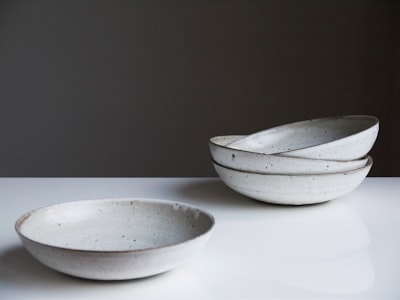I'm a participant in the Amazon Services LLC Associates Program, an affiliate advertising program designed to provide a means for me to earn fees by linking to Amazon.com and affiliated sites.
The cost of running a ceramic heater depends on various factors such as its wattage, the cost of electricity in your area, and how long you run the heater. To calculate the cost, you can use the formula:
Cost to Run=(Wattage×Hours Used)×Cost of Electricity per kWh
For example, if you have a 1500-watt ceramic heater and you run it for 5 hours a day at an electricity rate of $0.12 per kWh, the daily cost would be:
Cost to Run = ( 1500 x 5) x 0.12 = $9.00 per day
- Wattage: Higher wattage means higher energy consumption.
- Electricity Rates: Vary by location and can significantly impact the cost.
- Usage: The longer you run the heater, the higher the cost.
Download Raw
Photo by Tom Crew on Unsplash
Are Ceramic Heaters Cheap to Run?
The question of whether ceramic heaters are cheap to run is relative. Compared to other types of electric heaters, ceramic heaters are generally more energy-efficient. They heat up quickly and maintain the temperature effectively, reducing the need to run them for extended periods. However, they are still electric heaters, which are generally more expensive to run than gas heaters.
For those looking for an economical option, it’s worth considering the Best Space Heater for Bedroom: A Comprehensive Guide or The Ultimate Guide to the Best Heater for Room in Winter. These guides offer insights into various types of heaters, including their running costs.
- Energy Efficiency: Ceramic heaters are generally more energy-efficient than other electric heaters.
- Type of Heater: Gas heaters are usually cheaper to run but come with their own set of challenges.
- Room Size: The larger the room, the more energy will be required to heat it, affecting the cost.
Download Raw
Photo by Tom Crew on Unsplash
Questions on Ceramic Heaters Cost to Run
- How do ceramic heaters compare to other types of heaters in terms of running cost?
- What factors affect the cost of running a ceramic heater?
- Are ceramic fan heaters cheap to run compared to regular ceramic heaters?
- How can one reduce the cost of running a ceramic heater?
- Is a ceramic heater a good option for large spaces in terms of cost?
How do ceramic heaters compare to other types of heaters in terms of running cost?
Ceramic heaters are generally more energy-efficient than other types of electric heaters like coil heaters. This is because they heat up quickly and maintain the temperature effectively, reducing the need for continuous operation. According to Wikipedia: Space Heater, ceramic heaters are among the most common types of electric heaters used in homes.
However, when compared to gas heaters, ceramic heaters can be more expensive to run. Gas heaters use natural gas, which is usually cheaper than electricity, making them a more economical option for long-term use. But gas heaters come with their own set of challenges, such as the need for proper ventilation and the risk of carbon monoxide poisoning.
If you’re looking for a heater that balances both efficiency and cost, ceramic heaters are a good middle-ground option. They may not be the cheapest to run, but they offer a good blend of safety, efficiency, and convenience.
- Electric Heaters: Generally more expensive to run but safer and easier to use.
- Gas Heaters: Cheaper to run but require proper ventilation and come with safety risks.
- Ceramic Heaters: A middle-ground option that offers a balance of efficiency and cost.
What factors affect the cost of running a ceramic heater?
The cost of running a ceramic heater is influenced by several factors, including its wattage, the cost of electricity in your area, and how long you run the heater. Higher wattage heaters consume more electricity, thus increasing the cost. Electricity rates can vary significantly depending on your location, and this will directly impact how much it costs to run your ceramic heater.
The duration for which you run the heater also plays a significant role. Running a heater for extended periods will naturally increase the cost. It’s essential to consider the size of the room you’re heating; larger rooms will require more energy, thus increasing the cost.
Temperature settings can also affect the cost. Higher temperature settings will require the heater to work harder, consuming more electricity. Some ceramic heaters come with energy-saving features like programmable thermostats, which can help in reducing the cost.
- Wattage: Higher wattage increases the cost.
- Electricity Rates: Vary by location and directly impact the cost.
- Duration: Longer usage increases the cost.
- Temperature Settings: Higher settings consume more electricity.
Are ceramic fan heaters cheap to run compared to regular ceramic heaters?
Ceramic fan heaters combine the benefits of ceramic heating elements with a fan that distributes the heat more evenly throughout the room. This can make them more efficient in heating a space quickly. However, the fan also consumes electricity, which can slightly increase the overall running cost.
In general, ceramic fan heaters are not significantly more expensive to run than regular ceramic heaters. The added cost of running the fan is usually offset by the increased efficiency in heating the room. For those interested in the cost aspect, it’s worth checking out Room Heater Price Under 500 for budget-friendly options.
If you’re looking for a heater that can quickly warm up a room and are willing to pay a little extra for the convenience, a ceramic fan heater could be a good choice. They are particularly useful for larger spaces where quick and even heating is desired.
- Fan Consumption: The fan consumes additional electricity.
- Efficiency: The fan helps in distributing heat more evenly.
- Cost: Not significantly more expensive than regular ceramic heaters.
How can one reduce the cost of running a ceramic heater?
Reducing the cost of running a ceramic heater involves a combination of smart usage and energy-saving features. Many modern ceramic heaters come with programmable thermostats that allow you to set the temperature for different times of the day. This can help in reducing unnecessary energy consumption.
Another way to reduce the cost is by using the heater in a well-insulated room. Proper insulation will reduce heat loss, allowing the heater to maintain the temperature with less effort. Closing doors and windows while the heater is running can also help in retaining heat.
You can also consider using the heater in conjunction with other heating solutions. For instance, using a ceramic heater to supplement central heating can allow you to lower the thermostat on the central heating system, thereby saving on overall heating costs. For more tips on efficient heating, you can refer to Air Purifier for Smoke: Clearing the Air in Your Living Space and The Best Affordable Air Purifier.
- Programmable Thermostats: Help in setting temperature for different times, reducing energy consumption.
- Insulation: A well-insulated room reduces heat loss.
- Supplementary Heating: Using the heater in conjunction with other heating solutions can reduce overall costs.
Is a ceramic heater a good option for large spaces in terms of cost?
When it comes to heating large spaces, ceramic heaters may not be the most cost-effective option. While they are efficient in quickly heating up small to medium-sized rooms, their energy consumption can spike when used in larger spaces. This is because they would need to run for extended periods to maintain the desired temperature, thereby increasing the cost.
However, ceramic fan heaters can be a better option for larger spaces as they distribute heat more evenly and quickly. But even then, for very large spaces, other types of heaters like gas heaters or central heating systems may prove to be more economical in the long run.
If you have a large space to heat and are concerned about the cost, it may be worth investing in a more robust heating solution. Central heating systems, although expensive upfront, can be more economical for heating large spaces. Alternatively, using multiple ceramic heaters strategically placed can also be an option, but this would increase the overall running cost.
- Large Spaces: Not the most cost-effective for large areas.
- Ceramic Fan Heaters: Better for larger spaces but still not the most economical.
- Alternative Solutions: Central heating or gas heaters may be more cost-effective for large spaces.
Summary Table
Aspect | Details |
|---|---|
Type of Heater | Ceramic heaters are generally more energy-efficient than other electric heaters but may be more expensive to run than gas heaters. |
Factors Affecting Cost | Wattage, electricity rates, duration of use, and room size are key factors. |
Ceramic Fan Heaters | Slightly more expensive to run due to the fan but offer quicker and more even heating. |
Cost-Reduction Strategies | Use of programmable thermostats, proper insulation, and supplementary heating can help. |
Suitability for Large Spaces | Not the most cost-effective for large spaces; other heating solutions may be more economical. |
FAQ
1. How much do ceramic heaters cost to run?
The cost varies depending on the wattage, electricity rates, and duration of use. You can calculate it using the formula: Cost to Run=(Wattage×Hours Used)×Cost of Electricity per kWhCost to Run=(Wattage×Hours Used)×Cost of Electricity per kWh.
2. Are ceramic heaters energy-efficient?
Yes, ceramic heaters are generally more energy-efficient compared to other types of electric heaters.
3. Are ceramic heaters cheap to run?
They are more energy-efficient than other electric heaters but may not be as cheap to run as gas heaters.
4. How can I reduce the running cost of a ceramic heater?
Using programmable thermostats, proper insulation, and supplementary heating can help reduce the cost.
5. Are ceramic fan heaters more expensive to run?
They are slightly more expensive due to the fan but offer quicker and more even heating.
6. What is the average wattage of a ceramic heater?
The average wattage ranges from 750 to 1500 watts.
7. How does room size affect the running cost?
Larger rooms require more energy to heat, thus increasing the cost.
8. Can I use a ceramic heater for a large space?
You can, but it may not be the most cost-effective option for large spaces.
9. What are some good brands for ceramic heaters?
Brands like Dyson, Lasko, and Honeywell are known for their quality ceramic heaters.
10. Where can I find more information on the best heaters for different needs?
You can refer to guides like Best Space Heater for Bedroom: A Comprehensive Guide and The Ultimate Guide to the Best Heater for Room in Winter for more information.
By understanding the factors that contribute to the cost of running a ceramic heater, you can make an informed decision that suits your needs and budget. Whether you are looking for quick heating solutions or are more concerned about the long-term costs, this guide provides a comprehensive view to help you choose wisely.




